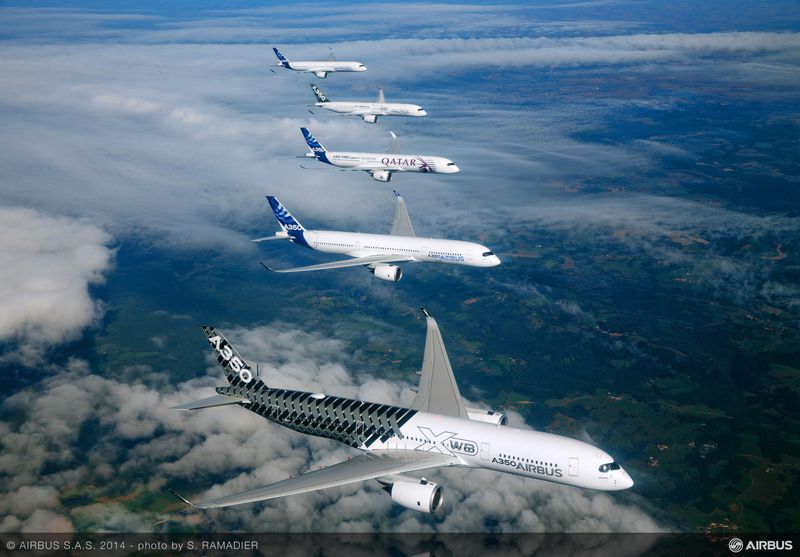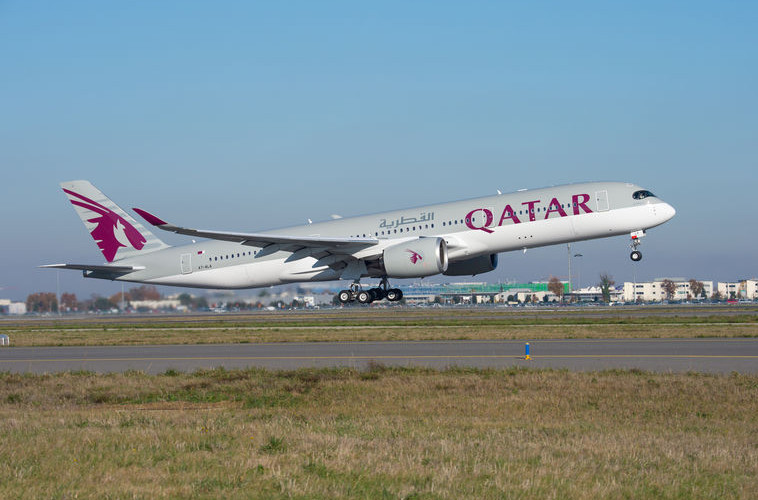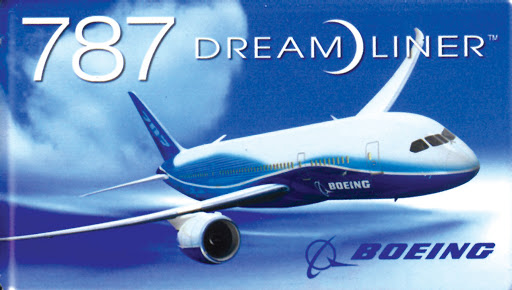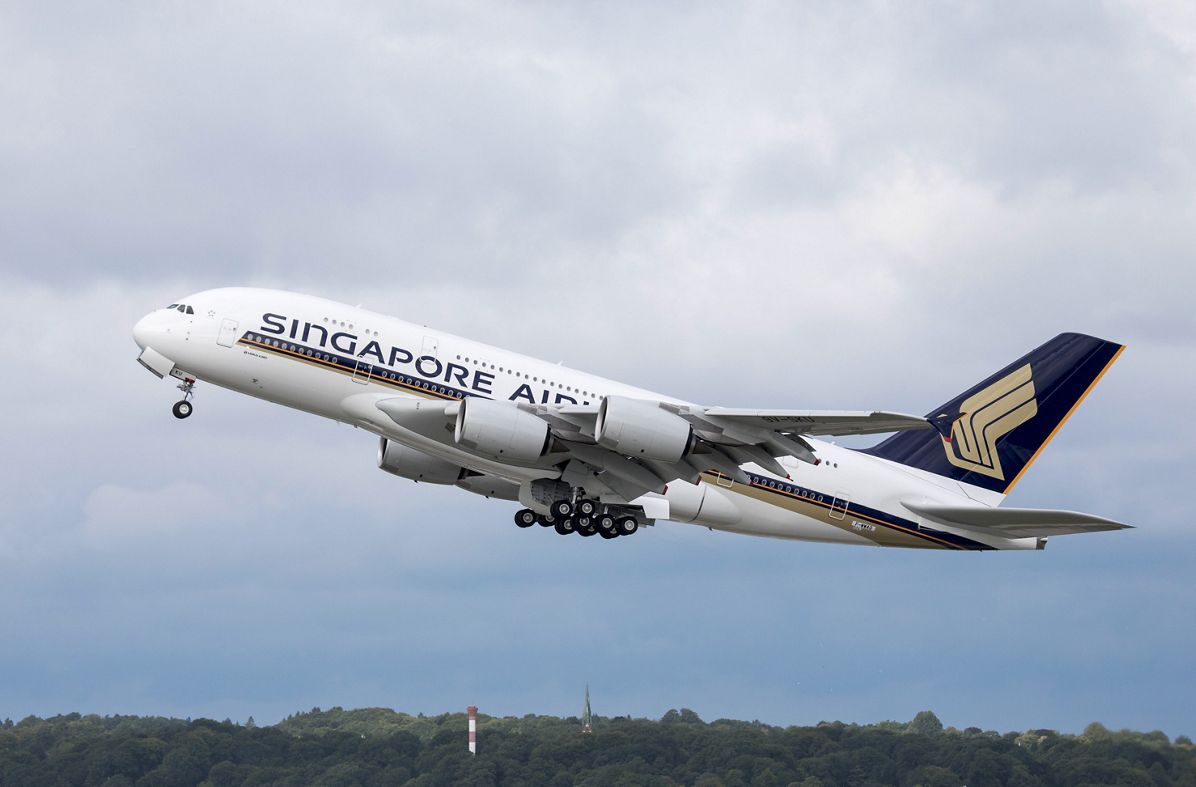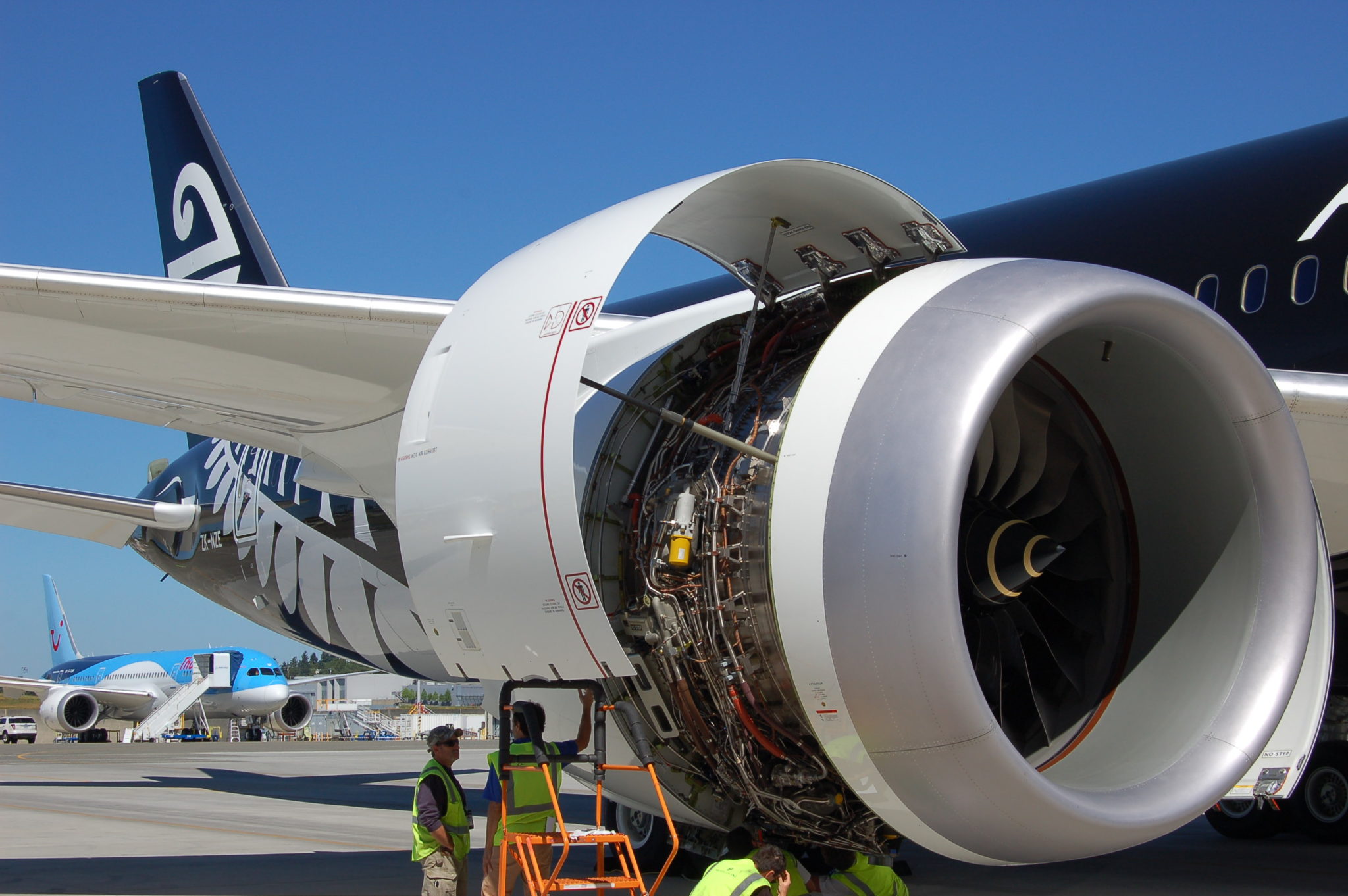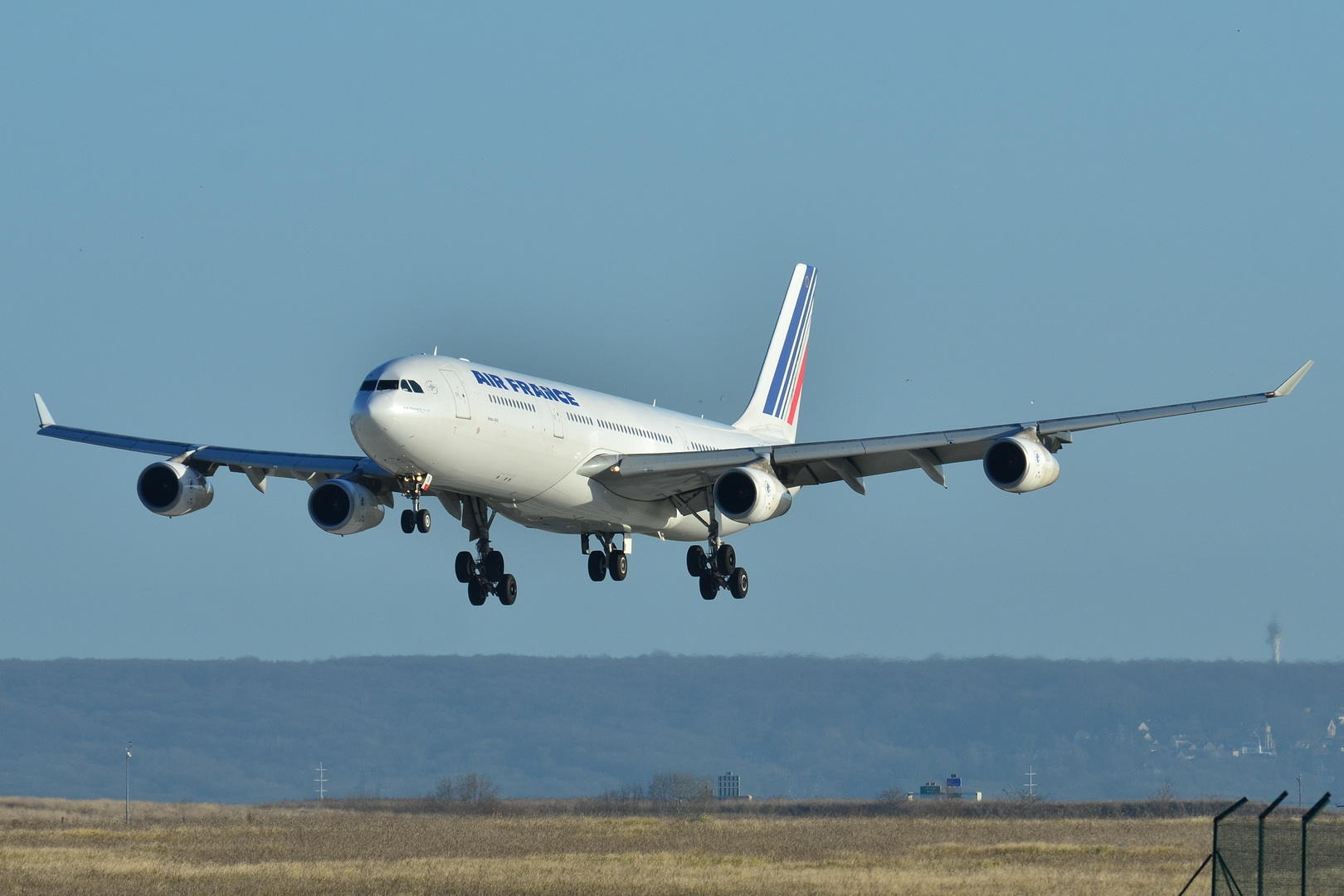Leeham News and Analysis
There's more to real news than a news release.
The A350, Part 2: Analyzing the A350-800
Subscription Required
By Bjorn Fehrm
Introduction
January 21, 2020, © Leeham News: Before the holidays, we started a series to look into Airbus’ A350 family. We analyzed the development program and how the variants have sold.
Initially, the A350-800 won about 180 orders. But as the market received more information about the smaller variant, the more it realized it wasn’t an optimal airplane. It was never officially canceled. But orders was up-gauged to the A350-900. Airbus decided the variant wasn’t competitive and developed the A330neo instead. We now look into why.
Summary
- The A350-800 was positioned as Airbus’ main defense against Boeing’s new 787-9, the most efficient variant of the Dreamliner.
- As the A350 program was delayed, the A350-800 moved from an optimized variant to a “cut and shut” version. This compromised its efficiency.
- Gradually Airbus changed its strategy how to compete with the 787.
Outlook 2021: Turboprops challenged
Subscription Required
By Judson Rollins & Bjorn Fehrm
Introduction
Jan. 11, 2021, © Leeham News: COVID-19 may ultimately prove to be a net positive for turboprop manufacturers. Near-term orders will be pinched just as for jets, but a long-term loss of business travel and the resulting impact to airline yields will make turboprops’ superior unit costs appealing for shorter missions.
Turboprop engines create their thrust with a very high bypass ratio. The result is 30% better fuel economy than a jet. But it also means 30% lower speed. This limits turboprops to stage lengths to about half that of jets.
The market-dominating ATR and De Havilland Canada (DHC) turboprops use this base efficiency to compete against newer regional jets despite having designs which are 20 years older.
Summary
- Turboprops have attractive economics, making them a larger part of the market post-COVID.
- ATR-72, DHC-8-400 turboprops are old designs.
- The only new turboprops come from Russia (Ilyushin I-114) and China (Xian MA700), limiting their market reach.
- Embraer is keen to enter the market with a new clean-sheet design.
- Continued dominance by ATR, DHC depends on whether Embraer goes ahead.
The A350, Part 1: Intro and A350-800
Subscription Required
By Vincent Valery
Introduction
Dec. 17, 2020, © Leeham News: After running a series on the Dreamliner, LNA will now start a series on Airbus’ latest-generation twin-aisle aircraft, the A350. Airbus should deliver its 400th A350 this month.
After a delayed ramp-up to 10 units per month, Airbus had to cut the A350 production rate to five per month after the COVID-19 pandemic. The European OEM might have to follow Boeing’s footsteps and reduce twin-aisle production rates further.
The A350 program has an official backlog of 532 orders: 415 for the -900 and 117 for -1000. Once passenger traffic recovers, Airbus should ramp production back up of its best-selling twin-aisle aircraft.
Despite its success, the A350 program wasn’t without hiccups. There were several and sizable iterations before Airbus finalized the A350 platform, and the -800 variant is non-existent but not officially canceled.
Summary
- A few iterations before launch;
- Development without significant issues;
- An in-favor aircraft family;
- The aborted A350-800.
Enhancing the Dreamliner, Part 8: Wrap Up
Subscription Required
By Bjorn Ferhm and Vincent Valery
Introduction
Nov. 26, 2020, © Leeham News: After analyzing the three members of the Dreamliner family on several routes out of San Francisco to Asian destinations, we conclude the series with a wrap- up of what we learned.
Summary
- A guinea pig for new technologies and processes;
- After a long slough against problems, a resounding commercial success;
- Size-wise, ideally-positioned for the post-COVID world;
- Future enhancements.
Enhancing the Dreamliner, Part 4: the 787-9 analyzed.
Subscription Required
By Bjorn Fehrm
Introduction
October 29, 2020, © Leeham News: We look deeper at the 787-9, the most successful member of the Dreamliner family. It’s 50 seats larger than the 787-8 but shares the same wing dimensions and engines.
The 787-9 quickly overtook the smaller 787-8 in sales and deliveries once its performance was clear to the airlines.
By following on the 787-8 it could benefit from many enhancements in design and production, becoming a very efficient aircraft in the process. To check its efficiency we run the 787-9 against its predecessor, the Boeing 777-200ER, on the San Francisco to Sydney route and look at the data.
Summary
- The 787-9 enjoyed all the improvements that came to light when developing the 787-8. The result is one of the most efficient twin-aisle aircraft on the market.
- Why it’s popular with the airlines becomes evident when we compare with the aircraft it replaces, the 777-200ER.
Sunset of the Quads, Part 9, Wrap-up
Subscription Required
By Vincent Valery and Bjorn Fehrm
Introduction
Oct. 1st, 2020, © Leeham News: Last week, we compared the economics of the A380 against the 747-8 and 777-9 on the Frankfurt to New York route. We now wrap-up our series on the significant passenger quad-jets of the last 30 years and how competitive they were against other quads and the twins that gradually took over the very large aircraft segment.
Summary
- A resounding success, a respectable career, and three commercial failures;
- Prospects for a Quad-jet passenger operation in the post-COVID world are slim;
- The next quads will come as low emission technology drives implementations to smaller propulsive units.
The engine manufacturers worst hit by the pandemic
Subscription Required
By Bjorn Fehrm
Introduction
September 28, 2020, © Leeham News: The worldwide COVID-19 pandemic is shaking the air travel and airliner manufacturing industries like no crisis before.
More than 9/11, the oil crisis of 1973 or 2005 or the financial crisis of 2008. The problems for the airlines and the airframe OEMs are on the front pages of the world’s media.
The part of the airliner industry that is not so visible but is perhaps hardest hit, is the engine industry. Its weird business model amplifies the effects of the crisis.
Summary
- Airframe OEMs lose money on the first hundreds of aircraft produced.
- When they announce “black numbers”, it means the per aircraft losses stop. It doesn’t mean the aircraft program is positive.
- For engine OEMs, it’s worse. They never reach ‘black numbers” on engine production. Their only money makers are old engine programs that fly a lot.
A lost decade for aircraft manufacturers, suppliers
Subscription Required
Now open to all Readers
Introduction
By Judson Rollins, Bjorn Fehrm & Scott Hamilton
Sept. 21, 2020, © Leeham News: Commercial aviation is facing a lost decade due to COVID.
Yes, most forecasts target 2024-2025 as returning to 2019 passenger traffic and aircraft production levels.
However, LNA in July published its own analysis indicating full recovery may not occur until 2028. Breathless headlines notwithstanding, it will take years for vaccines to be widely available and considered safe by enough of the world’s population. Growing concern about vaccine production and distribution capacity through 2024 underscores this view. Even Southwest Airlines CEO Gary Kelly said earlier this month that business travel might not fully return for a decade.
Indeed, the 2020s may well be a lost decade for aircraft manufacturers and their supply chains.
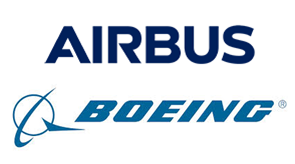 Summary
Summary
- Debt-laden airlines will have little money to order new airplanes
- Interest in re-engined 787, A350 likely nil this decade
- Airbus, Boeing, Embraer have little interest in launching new programs
- Engine makers too financially stretched to develop new designs
- Engineering talent, knowledge will be decimated by inevitable job reductions
- OEMs must “play the long game” at a short-term cost to safeguard their futures
Sunset of the Quads, Part 6. The A340-600 versus the 777-300ER.
Subscription Required
By Bjorn Fehrm
Introduction
September 10, 2020, © Leeham News: The Airbus A340-600 was designed to challenge Boeing’s hold of the large, long-haul jets. With a capacity 60 seats above the previous largest Airbus jet, the A340-300, and a 7,500nm range, it should put Airbus firmly on the long-haul map.
The A340-600 would be flying its 350 passengers as long and for a lower cost than the 20 seats larger Boeing 747-400, the then-largest long-haul Boeing jet. It would have worked hadn’t Boeing upgraded the 777-300 to the 777-300ER and surpassed the spec. How much better did that make the 777-300ER when it arrived in 2004?
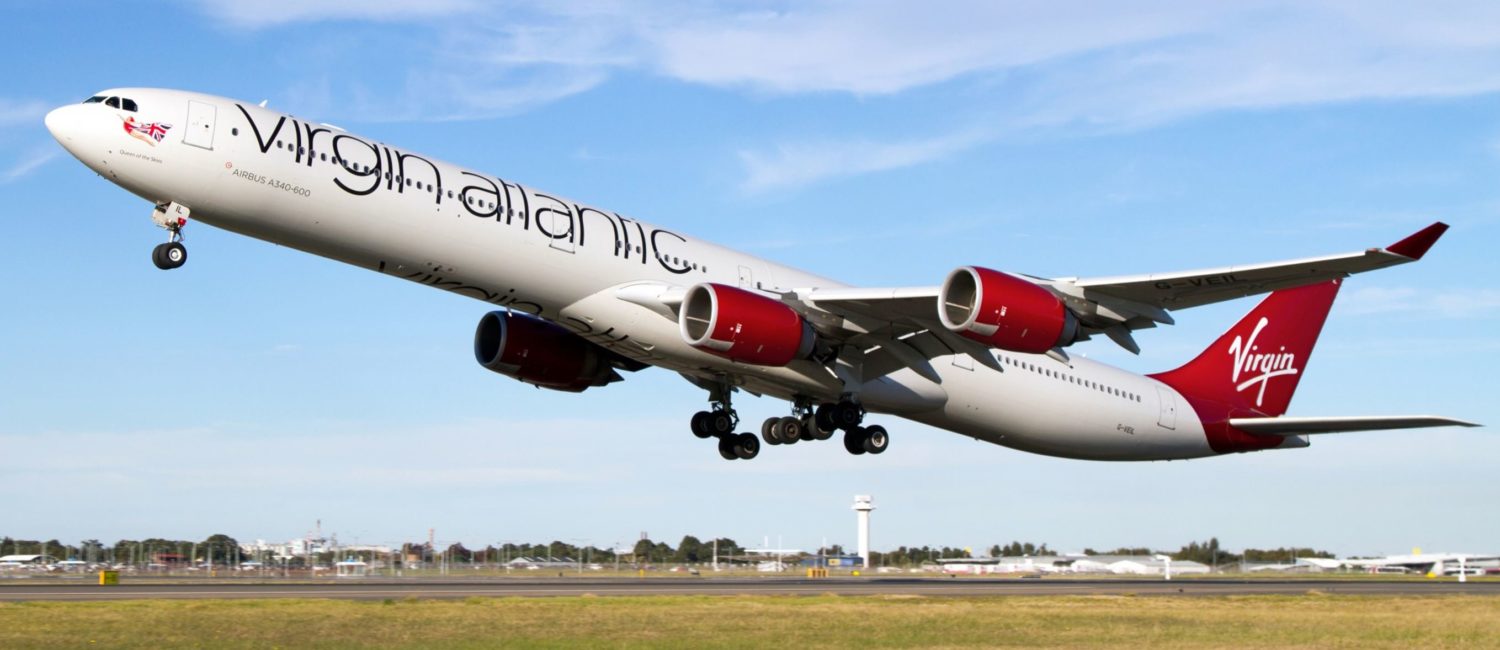 Summary
Summary
- The A340-600 could take almost as many passengers as the Boeing 747-400 and fly these to the same distance.
- In addition, it loaded more LD3 cargo containers and burned only three-quarters of the fuel of a 747-400.
- But the advantage of the A340-600 was shortlived. Only two years later Boeing responded with the 777-300ER which bettered the Airbus on almost all accounts.
Sunset of the Quads, Part 4.
Subscription Required
By Bjorn Fehrm
Introduction
August 27, 2020, © Leeham News: After presenting Boeing’s and Airbus’ first 300 seater long-range widebodies, the 777-200ER and A340-300 in Part 3, we now fly them both on the route Paris to San Fransisco to understand their economics.
The A340-300 was first on the market, but when the 777-200ER arrived amid changed ETOPS rules, the four holer found the twin a difficult competitor. We use our airliner performance model to understand why.
Summary
- The A340-300 has about the same payload-range performance as the later introduced 777-200ER.
- Its economics is competitive with the 777-200ER, yet sales dried up when the 777-200ER became available. We explain why.


